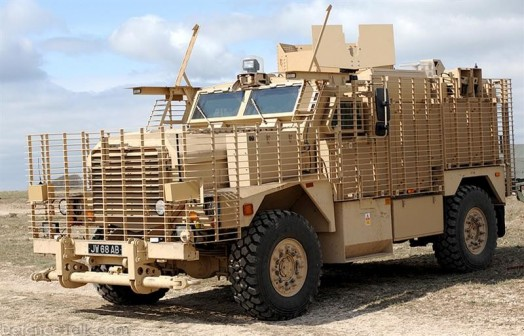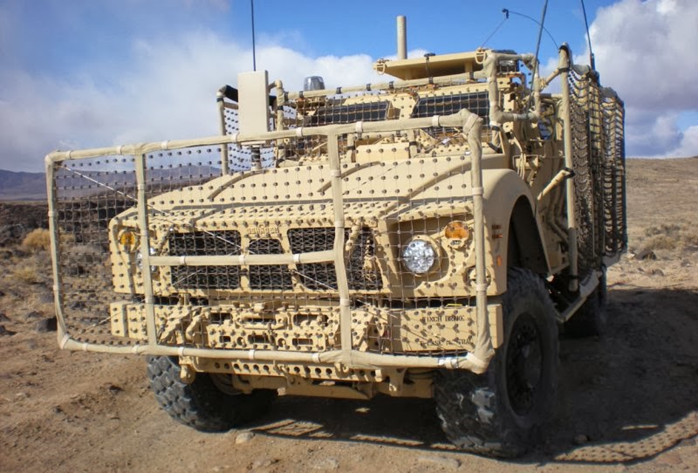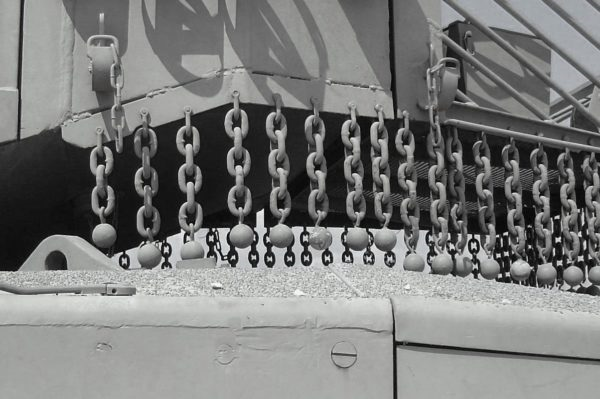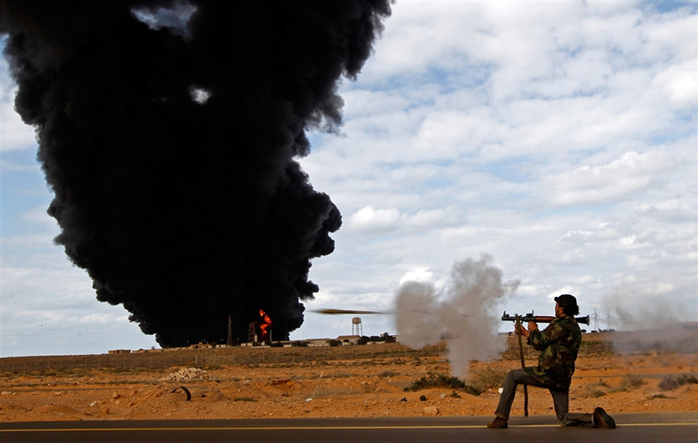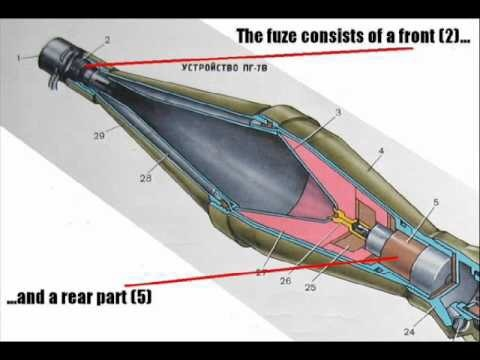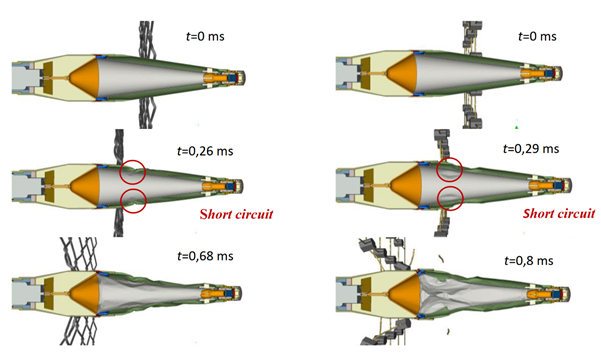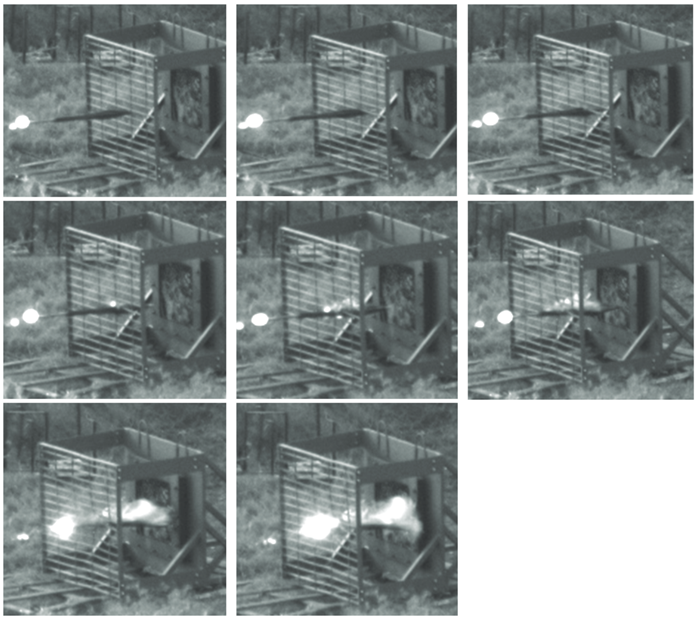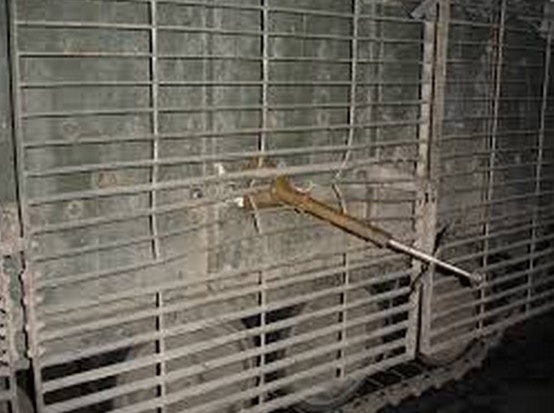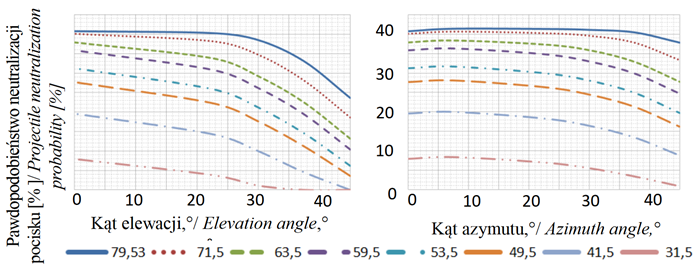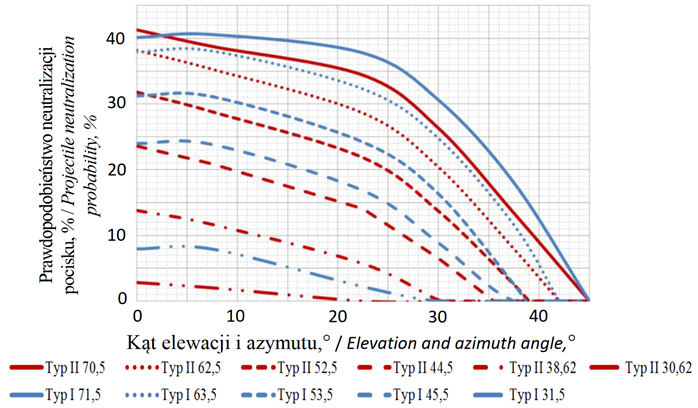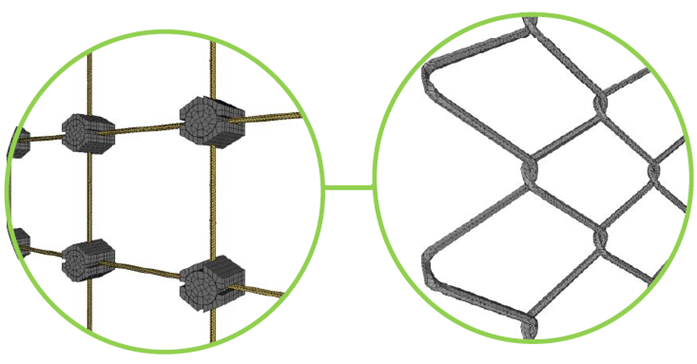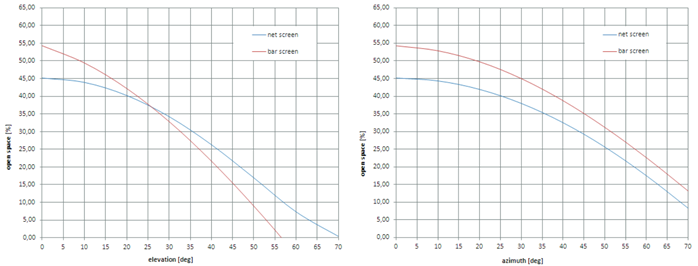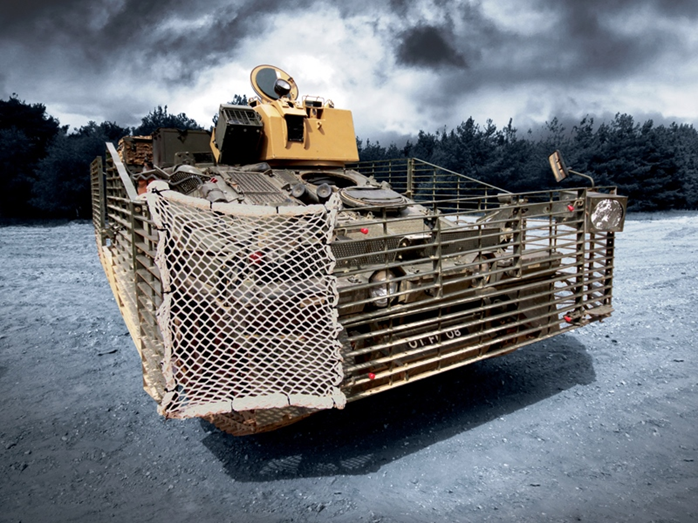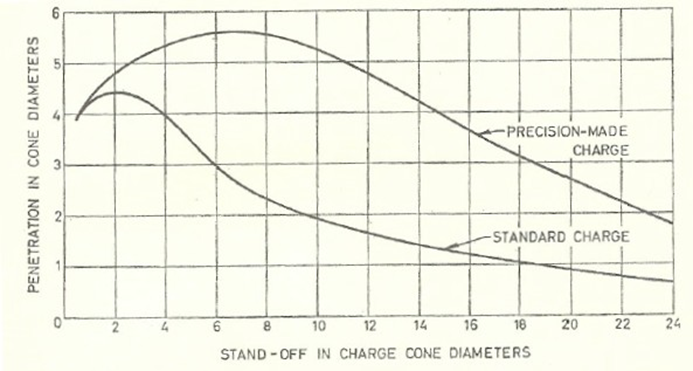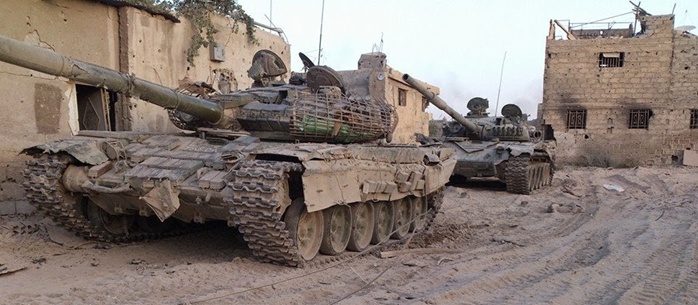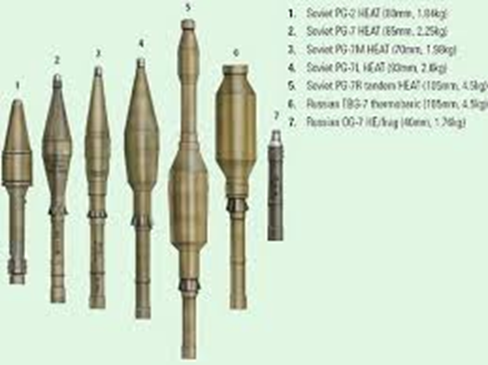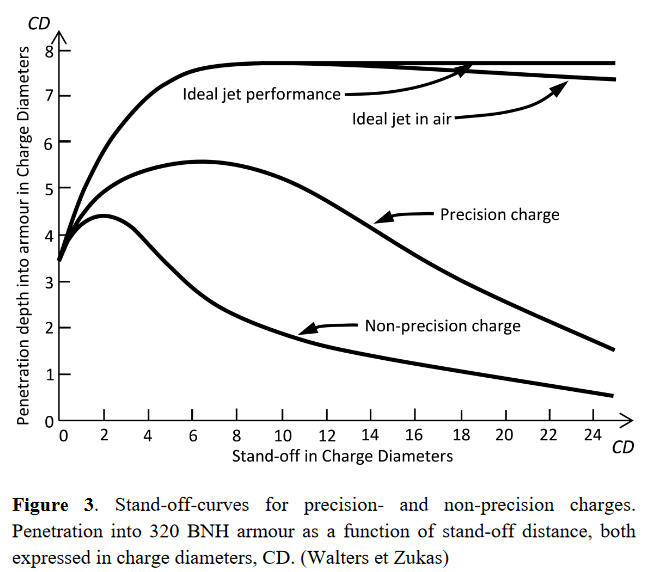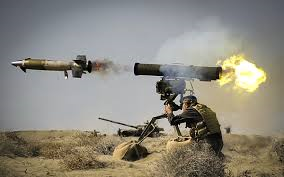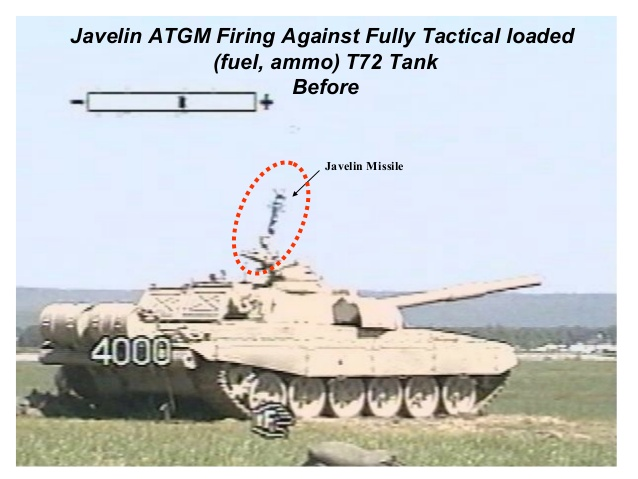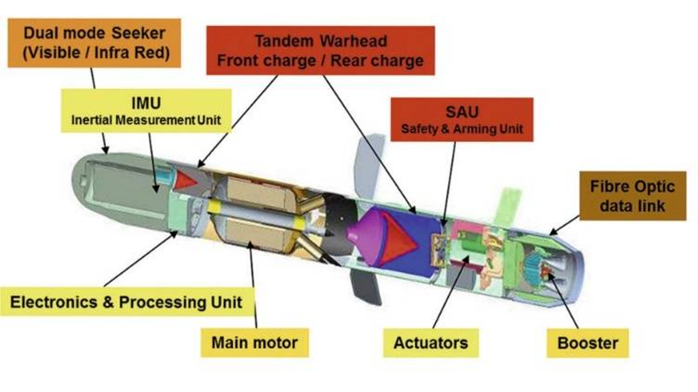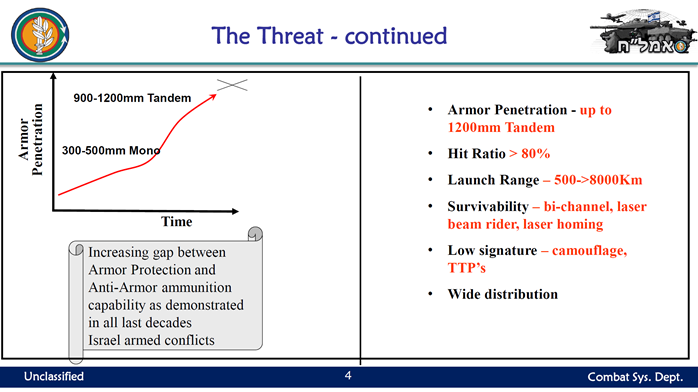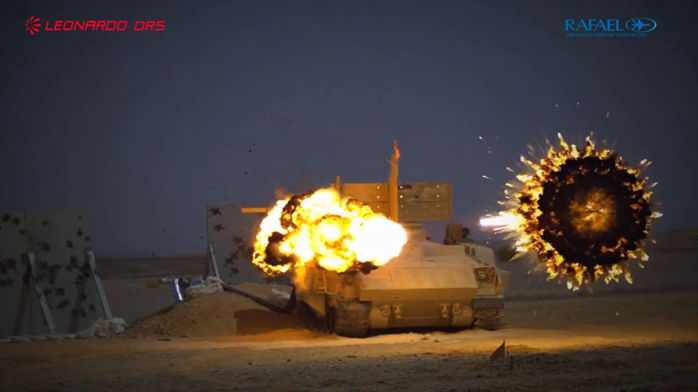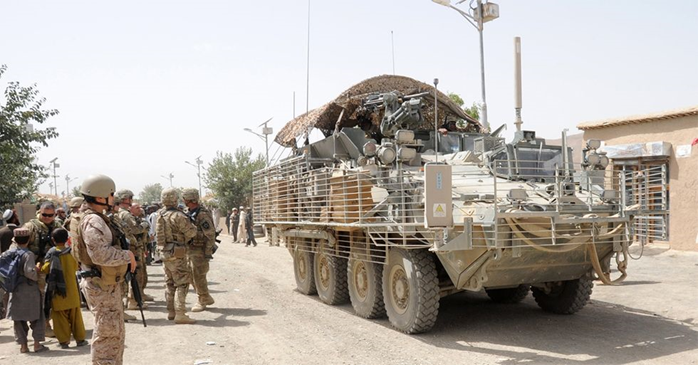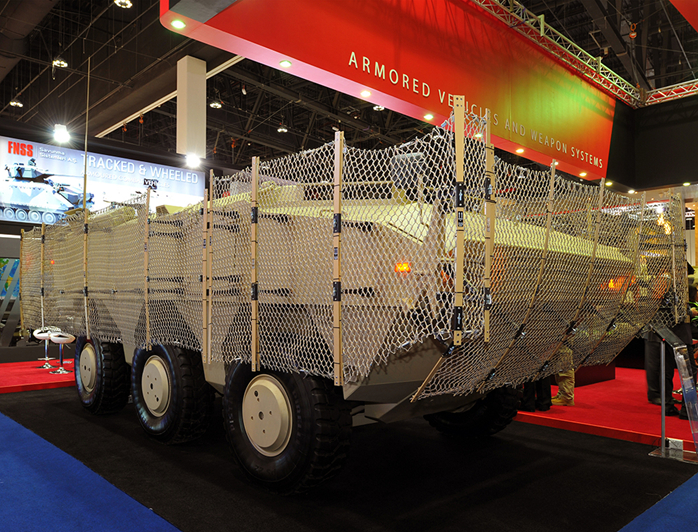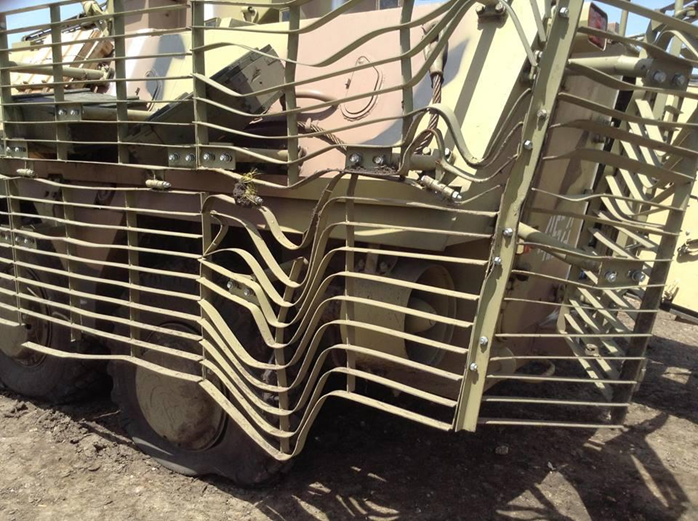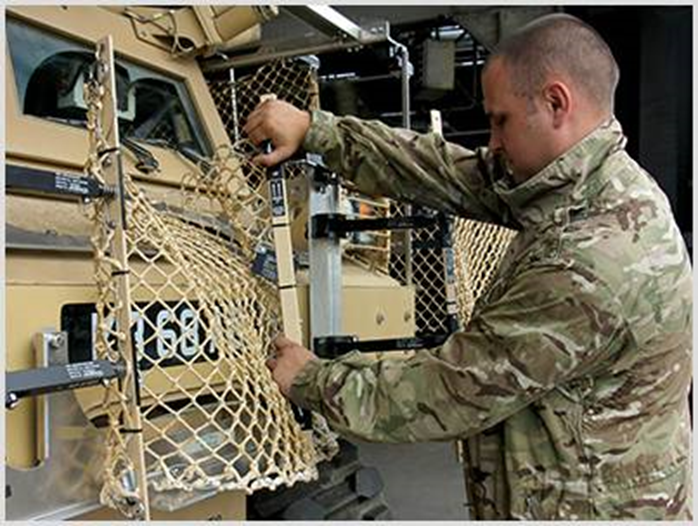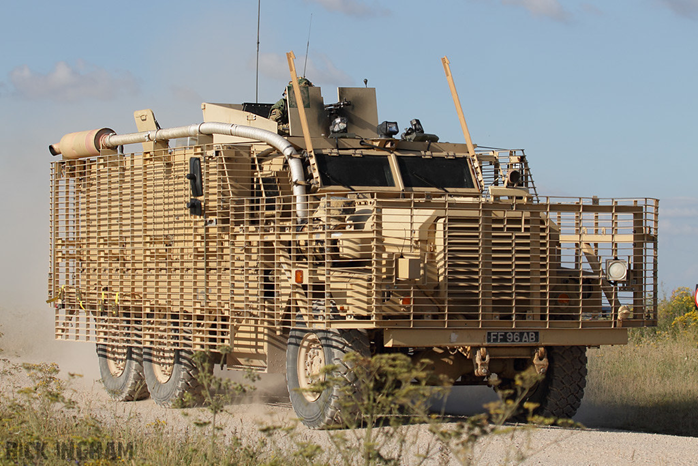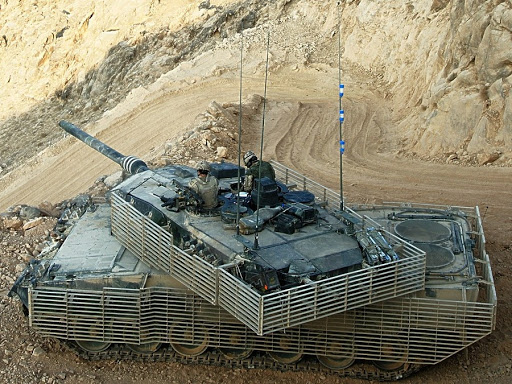Having done mobility concepts to death of late, I thought it interesting to do a short thread on vehicle armour, specifically statistical armour (bar and mesh mainly) and tackling a few tropes around it. #miltwitter #tanktwitter #AFVaDay
Usual disclaimer - this is Twitter, I don’t have much space and so some things are simplified or omitted for brevity. This is a hugely complex science, I’m just giving a flavour of some of the considerations inherent in AFV design. With that out the way…
What is bar armour? Also called slat/cage/mesh/net armour, its one of a range of methods collectively called statistical armour, so called as it presents a statistical likelihood of defeating a specific projectile type
Statistical armour is exclusively for defeat of shaped charge munitions using a double-skinned nose as conductive path for piezoelectric-based fuzing system, including RPG-7/PG-9/PG-15/SPG-9 families
Here a pic of typical RPG warhead. Note front portion holds piezoelectric crystals and rear is the fuze. When front impacts target, piezo crystals are crushed and send electrical current to the rear via inner 'skin', causing detonation. Statistical armour targets this mechanism
Statistical armour designs feature some form of rigid grid to provide a statistical probability that warheads of this type will pass through a gap in the grid (which needs to be smaller than warhead diameter, typically 65-95mm for PG-7 family) rather than directly strike it
As warhead is wider than grid, effect will be to deform it, making inner and outer skins contact. At this point, even if piezo crystals are crushed, when the electric current is sent via the inner skin, it can't reach the rear, because the skins have formed a short-circuit
The warhead is also critically damaged, neutralising it or degrading its efficacy greatly, and/or catching it so it is stuck in the bars having not impacted the vehicle or (ideally) detonated
There's an inherent risk of course - plenty of users have to deal with the dreaded mangled (and still live) RPG stuck in the side of the vehicle's bar armour, which is not great, but much better than it having detonated
The downside is that the RPG needs to pass through the gap correctly for the defeat to work. If it strikes the bars it may initiate and depending on aperture size if it passes in the very centre the deformation of the warhead may be insufficient to neutralise it
The design therefore needs to balance size to optimise defeat. An increasingly oblique elevation/azimuth of approach raises the likelihood that the RPG will initiate rather than be neutralised unless the aperture is increased
However, opening up the apertures will mean greater likelihood of failure to neutralise in a direct on-axis penetration. Tradeoffs, as with all engineering
An observation on efficacy – even in the optimum conditions in this Polish test of net armour – 0° azimuth/elevation using the better of the two designs tested and an ideal aperture size, the best probability of the RPG being neutralised was still only 42%
Construction and materials: whist steel bars were the original method and remain most widely utilised, statistical armour can be a wire mesh, which is increasingly used for its much lighter weight and smaller size
Mesh configurations can use simple wire mesh or may be a net screen with reinforced nodes at each joint. In either case the thickness and materials used for the wire can vary significantly, and each bring benefits and tradeoffs
With efficacy linked to how much open space there is for a threat to encounter, conventional steel bar and wire mesh each have their own strengths. Generally speaking bar designs are better for varying azimuths but lose out once elevation increases beyond ~30°
Upside of bars is that they can readily be repaired in the field by cutting/welding the damaged section, where mesh needs entire panel replacements. Solutions like AmSafe Bridport’s Tarian Quickshield allow for temporary patch repair of either configuration, which is neat
A common trope is the claim that the intent of bar armour is to initiate a warhead away from the vehicle and thus degrade jet formation and consequent penetration of the defended vehicle. Not true
As already stated, the point of the armour is to catch and ideally critically damage, so as to neutralise, the RPG in the armour, not initiate the warhead
The reality of this trope can be more significant - detonating the warhead at the bars can be at least as bad as if it had hit the defended vehicle and, in some cases, a worse result for the defended vehicle
Shaped charge penetration is a well modelled relationship of standoff in cone/charge diameters (CD) resulting in a penetration also measured in CD. In general, the optimum standoff is greater than can be achieved without excessive nose probes on the round
Charge liner material has significant impact, newer & denser materials can radically increase CD ratio. Most use copper owing to high density (8900kg/m2 vs 2800 for aluminium in this chart), however newer dense materials like molybdenum can further increase penetration by 10-20%
As such, a modest increase in standoff, achieved by a warhead detonating on the bar armour rather than the hull, can marginally increase efficacy of the penetration, as many legacy weapons have suboptimal standoff for practicality of round size
Rough example for a typical PG-7 type RPG. If it impacts vehicle directly, it would have circa 2-2.5CD of built-in standoff, giving it a penetration of ~350mm. If it detonates on bar armour at a standoff of around 300mm, it is at around 4.5-5.5CD & penetration rises to 425-475mm
This has been seen extensively in Syria, where some DIY appliqué protection has been may well have brought largely older generation warheads closer to optimal standoff than they would have been without the 'armour'
More modern rounds like the PG-7VR tandem warhead (#5 in this pic) has the main charge well back on the round to optimise standoff, however it does result in an ungainly round with practical limitations as a result
In the case of a round with integral optimised standoff you would see a marginal degradation of penetration, but note the CD ratio declines more gently than it rises – the result is not generally a significant loss of penetration in these cases
The big question - where do HEAT-type ATGM missiles sit in all this? They dont, whilst they might theoretically suffer similar pre-detonation destruction on impact, most are a much larger calibre (e.g. 152 mm for the Kornet) and are likely to detonate on impact
Many utilise alternate fuzing such as proximity fuzes for optimum standoff meaning they will initiate before impact, so cannot be defeated by deformation of the nose, and a good number use top attack, negating the armour altogether
Modern ATGM also feature built in optimal standoff (notice the main charge is a long way down the length of the MMP missile in this pic) and owing to the huge penetration values, don’t overly care about a foot here or there on initiation
In the case of almost any vehicle barring the frontal armour of some MBT, the penetration of these weapons is vastly higher than the thickness of armour. AFV have comparatively very thin armour on flanks, rear and roof
For context, weapons like Kornet have a penetration of 1,200+ mm RHA. Even if this is greatly degraded by suboptimal detonation away from the vehicle, it still hugely overmatches almost any vehicle protection once initiated
When it comes to big modern ATGM the solution is to prevent the hit - soft/hard kill APS, signature management etc. For these the solution is outer layers of the survivability onion. If it is going to hit, its going to do some real damage
As mentioned the significant drawback of bar armour is it is very heavy - ~2.5t for a Stryker. Net/Mesh can be up to 90% lighter, with performance implications mentioned earlier – everything is a tradeoff
Another big issue is size - big AFV are even bigger with bar on the sides, which catches vegetation, buildings and lord knows what else. Things like fitting into aircraft and landing craft become a major big issue that requires intensive (dis)assembly at each end
Tarian is handy as the brackets can be folded by hand, meaning they collapse if the vehicle brushes something immovable rather than smashing the armour off, and when boarding aircraft or vessels you can just collapse it all flat onto the vehicle
Bar armour also has some big human factor implications to fit it. UK Mastiff version of the US Cougar doesnt have doors for driver/passenger in the front as passive and bar armour blocks them. They have to crawl in from the rear
Whilst you can hinge the panels, they risk fouling or pevent full movement of hatches and doors. Bar armour arrays on sides/rear of tank turrets block engine bay access and have to be removed for maitnenance. Blind spots, fouled arcs and implications for ingress/egress all result
And that’s some rambling introductory thoughts on statistical armour and the major tropes around it. #miltwitter #tanktwitter #AFVaDay /end

 Read on Twitter
Read on Twitter